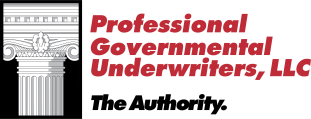Methods for Schools to Protect Student Data Privacy

How Charter Schools Are Moving to Increase Diversity
April 15, 2019
Understanding School Liability for Student Injuries on the Premises
April 29, 2019Methods for Schools to Protect Student Data Privacy
Practically every year technology finds a way to continue to transform classrooms across the world. Record keeping, administrative duties, learning prompts, discussion boards, and more are all being guided by new technology and software updates. And while tech has opened the door to many different learning possibilities and ways to teach and reach students, it has also created plenty of issues in the world of data and personal safety.
The FBI is checking in with schools, warning them of the sensitivity of having their data more available for fraudsters and hackers today. As the universe of data grows and as schools become more reliant on technology, it is important to consider what student data is being generated as well as where it is all stores and who controls it. Here are some steps that can be taken:
Understanding the Data
School administrators should start by learning how data is collected and stored, and take into consideration everything from enrollment information to health forms to classroom education technology data. From here, data policies can be developed that address a number of issues.
Once an outline for a policy is implemented, administrators can figure out who will approve classroom applications that collect and store the student data in question. Also, a policy should be able to outline who decides what student information will be collected and where it will be stored, and also how to properly secure the collected information.
Schools should understand their state’s data laws when it comes to information related to their students and make sure they are following legally obligated guidelines to avoid major liabilities.
Establish Tech Contact
Having a dedicated technology director can reduce confusion around who is in charge and will help to outline procedures for an entire school or district when it comes to responsibilities. Having simple policies such as requiring students and teachers to update passwords regularly can help to protect student data. The technology director can oversee decisions around securing the network with firewalls, protection solutions, and authentication software.
When it comes to vendors, it should be ensured that there are similar policies in place to protect their systems. One way this can be done is to hack into your own system to understand its weaknesses, then go back in and patch everything together to better understand what risks the system faces.
Implementing Safety in the Classroom
Teachers and administrators may see this as a daunting task with many different avenues that open up their students to data safety issues. But there are a number of things that can be done inside the classroom and not just at the administrative level. Here are a few ideas:
- Digital Citizenship: Students can learn about digital citizenship early on. Students today, even elementary school students, are well versed in everything from texting to Instagram stories, but with the right guidance and education, students can navigate search engines and evaluate online sources for credibility.
- Establish Protocols: Any system that holds on to students’ information should be password-protected for any user. Teachers should lock their computers when they are away from their desk and everyone should have a solid education on how important a strong password is.
- Network Monitoring: Being able to closely monitor your networks and regularly enforcing rules and policies around network routers and firewalls will help to ensure that everyone is educated around the importance of network security.
- Call for Backup: Backing up important information and storing it in an offline as much as possible will help to add a level of security. Administrators and teachers should ensure that all operating systems and antivirus programs on all devices (i.e. tablets, computers, cell phones) that are connected with any network in school are up to date.
About PGUI
Professional Governmental Underwriters, Inc., is a full-service risk management company dedicated to assisting public, educational and non-profit entities in the management of their professional liability exposures including educators liability insurance. We are dedicated to providing state-of-the-art professional underwriting management and loss control advisory services on behalf of our designated carriers. For more information, call us toll-free at (800) 586-6502.


